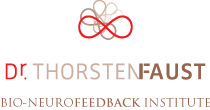MIGRAINE
HEADACHE WITH REPETITIVE AND INTENSE ATTACKS THAT SIGNIFICANTLY AFFECT THE QUALITY OF LIFE OF PEOPLE SUFFERING FROM IT

Migraine is a neurovascular disease characterised by intense and repetitive headache attacks accompanied by vegetative and neurological symptoms (dizziness, vomiting, sensitivity to light and noises, tingling feeling, blurry vision, tinnitus).
Although the focal brain disorder is completely reversible, many patients (between 4 and 29% of the population) have a significant reduction in their quality of life and may manifest other co-morbidities (panic attacks, depression, anxiety).
There are effective treatments for migraine, such as treatment with medicine (aspirin, ibuprofen, triptans and others). However, some patients may have side effects to medication or simply do not respond well to this type of treatment.
Current studies speak of oscillations in cortical excitability, with recurrent changes to neurophysiological parameters that correlate with changes in predisposition to migraine attacks and, in parallel, the central nervous system's sensitivity to causes of migraine (stress, hunger, hormonal changes in women's cycles).
Other lines of research speak of vascular theory, which entails dilation of meningeal blood vessels and the release of peptides, which activate pain fibres.
In our migraine therapy, we combine Biofeedback and Neurofeedback. The main goal is to improve skill at self-regulation and optimise the brain excitability threshold. With blood vessel constriction training (Biofeedback), patients work to regulate the diameter of the blood vessel to obtain
an effective tool when they notice the first symptoms of migraine. Our work is combined with Neurofeedback so that patients can learn to 'relax the brain'.
The Neuro-biofeedback we apply at the Dr Faust Institute is used for migraine cases with
extremely positive results. Indeed, we can consider that in 80-90% of the cases, the symptoms
are reduced significantly and an astounding 60% stop having any episodes. Naturally, we must
always bear in mind the particular characteristics of each person and their circumstances.
The benefits of this technique is due to normalising the activity of brain waves, which are
altered in patients suffering from this disease.
Neuro-biofeedback works, not only in preventing painful attacks, but acting at the time they occur, relieving and preventing them from becoming more intense.
After 10 sessions, both children and adults have learned the self-regulation technique, which leads to a considerable drop in migraine attacks and clear improvement in patients' quality of life.
Although separate from migraine, tension headaches respond extremely well to our treatment, as we work primarily with biofeedback at a muscular level (deltoid, trapezius and sternocleidomastoid muscles).


